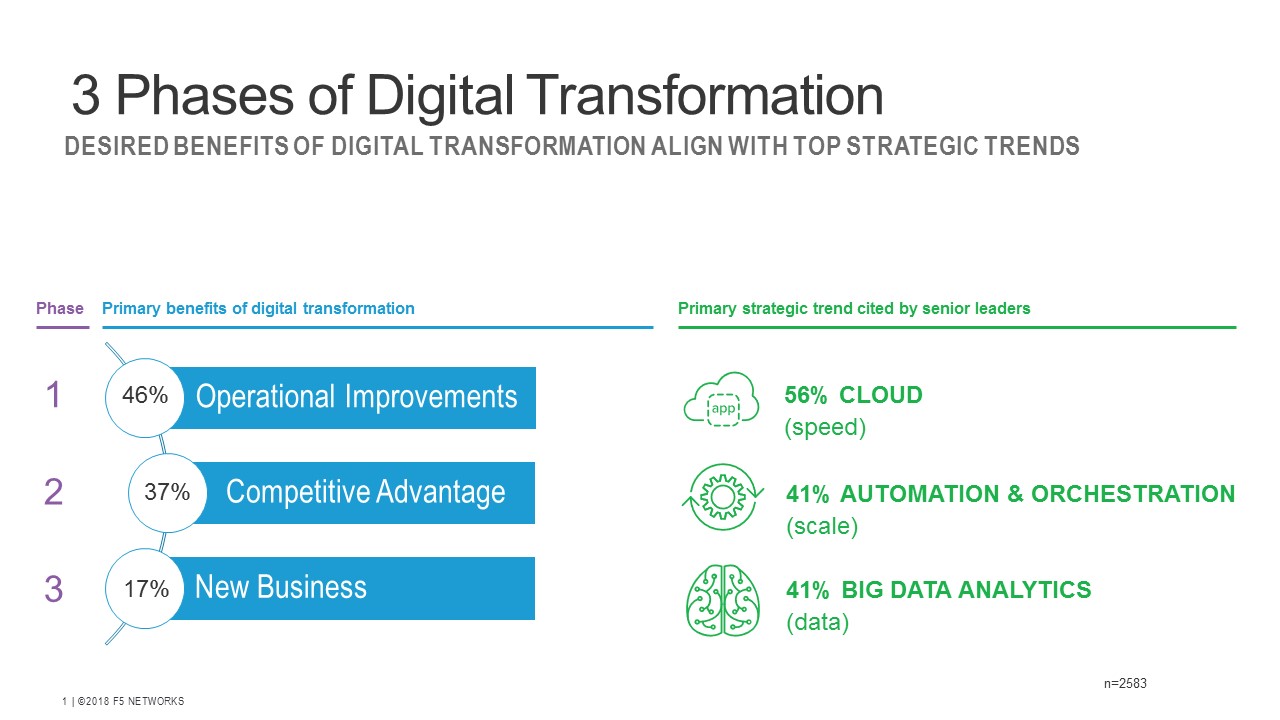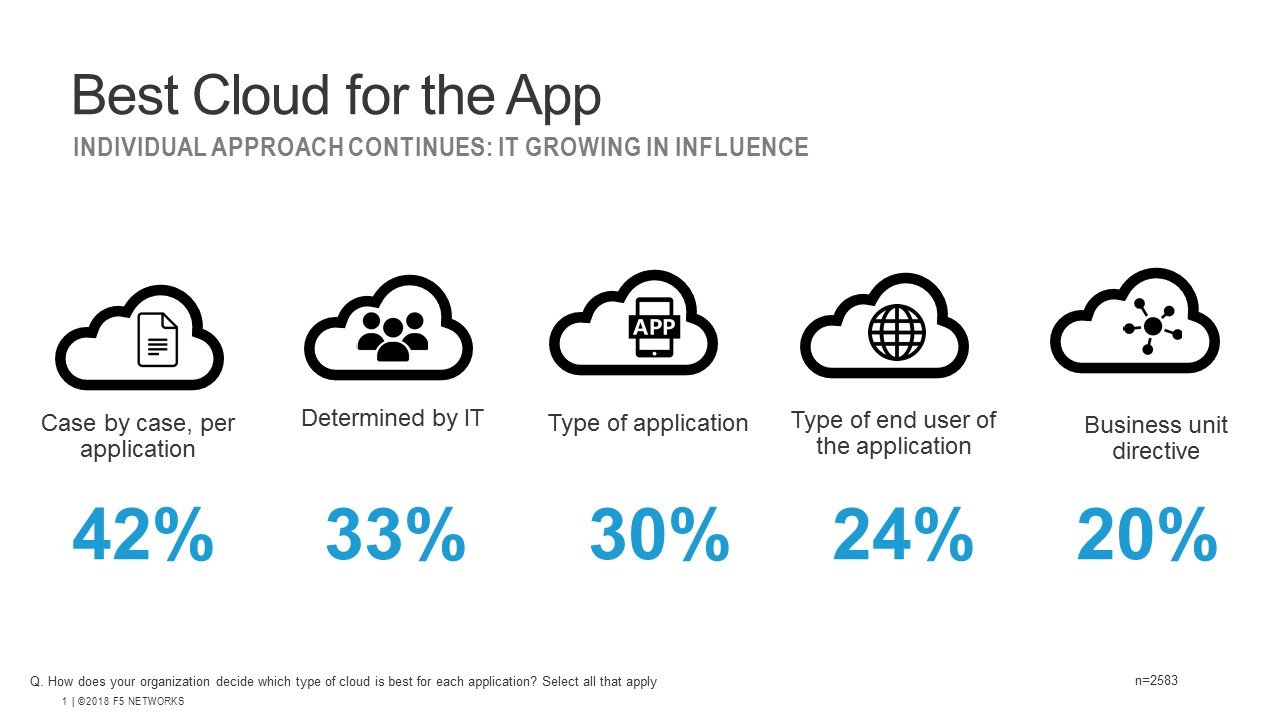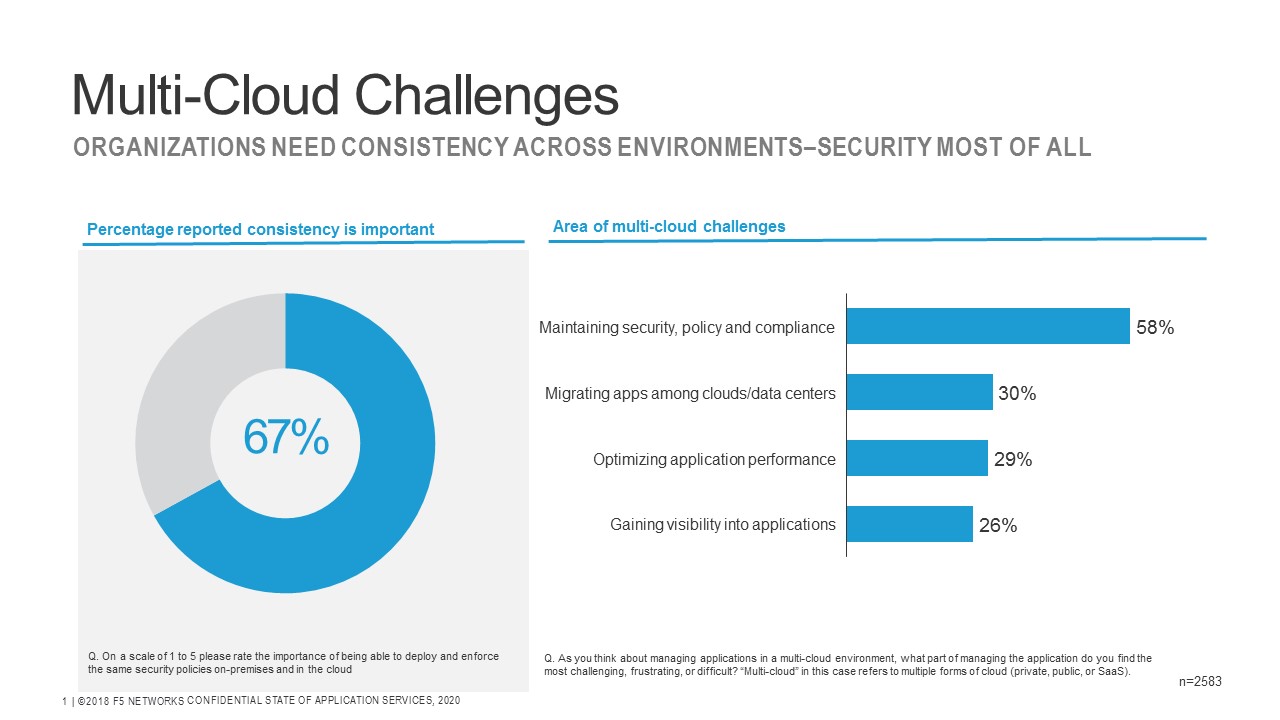2020 State of Application Services: Cloud Insights
As you have likely seen, we have officially launched our 2020 State of Application Services (SOAS) report. If you haven’t read that post yet, stop reading this, then come back. I’ll wait…OK, now that you’re back, I would like to recognize the tireless effort of Lori MacVittie and Cindy Borovick in pulling together this incredibly valuable report for the sixth year. This report isn’t just nice to look at: It helps us better align our vision to you, our customers, and provides valuable knowledge on the State Application Services.
As you saw in Lori’s intro, she uses the term “cloud-native” numerous times, but do we really understand what she means? I spend most of my time talking to our field teams and customers and from what I hear, this term means different things to different people. If I asked 10 people in any given day, I can guarantee I would receive 10 different answers. It’s important we level-set here, so if you haven’t yet read this post from August, I highly encourage you to do so.
In the US, it’s primary season, which means constant ads, pundits predicting the future, and all sorts of interesting data interpretations. Now if you don’t watch or aren’t US-based, you’re probably thinking so what? Why is this guy writing about primaries? Well, during the Iowa caucus on February 3 something near and dear to many of us drove several news cycles: an application and how its failure threw an entire process into chaos. The goal of using the app was to be more efficient, get speedy caucus results, and serve the user base more effectively. Sound familiar? This requires more than just the app itself—you need robust application services.
Which brings us back to SOAS. The report provides a behind-the-scenes look at how and why organizations are making certain choices. One thing is certain, digital transformation is happening (in fact, it’s happening in 80% of organizations surveyed) and it’s accelerating. One goal that customers have in digital transformation is operational improvements, which is of particular interest to me in terms of cloud. The outcomes that occurred for the Democratic Party of Iowa are all too common in the enterprise world, hopefully minus the press and punditry. So, the question comes, why is digital transformation happening in the overwhelming majority of enterprises?
Insight #1: Clouds and Speed
One of the major factors is speed. Enterprises are desperately trying to innovate faster and engage with customers in new ways in rapid fashion. Driving operational improvements becomes paramount, and this in turn is driving adoption of cloud. Which brings me to my first insight: 56% of customers choose cloud for speed. A technology or architecture choice must align to business outcomes or you risk designing to build resumes, not a business. If you understand that operational efficiency is the driver behind cloud adoption, does your design change? Does cloud-native take a meaning more like the post from Lori?
OK, we are choosing cloud for speed, now we need to choose a cloud platform. As we know, there are a plethora of choices, but it turns out a significant majority of customers (87% of those surveyed in the report) have stated multi-cloud is the strategy they have adopted. Why?
Insight #2: Clouds and Apps
One reason becomes clear when you look at how choices of cloud providers are made. Our survey respondents told us that 42% are choosing the cloud on a per application basis and 30% by the type of application. This makes sense and will likely continue, because certain clouds do perform certain services better. Like ‘cloud-native,’ cloud itself is a broad term and requires deeper investigation. Matching your outcome, or in this case your app, to the functions of a cloud service can drive operational improvements and potentially streamline how much coding your team needs to do by allowing you to leverage the functions of the cloud provider.
The theory of choosing specific clouds for specific functions is sound, but if the outcome for cloud is speed then the unintended consequence of choosing based on the type of application or per application is potential operational complexity.
Insight #3: Clouds and Complexity
Reducing complexity is a primary reason we see customers looking to automation and then orchestration. A&O is an integral part of achieving an economy of scale with cloud, which elevates its strategic importance to organizations embracing digital transformation. But few organizations (only 11%) operate in only one public cloud, leaving the bulk (51%) operating in two to six different public clouds. For most (about 80%) this means challenges. So, what did our survey respondents tell us were their primary concerns with moving to multi-cloud? 67% percent of respondents told us that security policy consistency is important and that matches to the second question of challenges with managing applications in multi-cloud.
One additional point to watch during next year’s survey is the need for visibility into applications. I’m hearing this come up more and more and over the course of the next year, I believe this will move up in priority for concerns with multi-cloud. The fact is, you can’t manage or secure, what you can’t see (or measure).
So, where does that leave us? Cloud-native, while still a term with many definitions, can be thought of as a methodology and approach, not a specific technology. And the importance of firmly instilling that into your organization can’t be overstated. The priority for teams and individuals involved in digital transformation is to ensure they agree on and understand the business outcome, using it to inform technical designs/solutions. Don’t be afraid to regularly stop and ask yourself the question, “How does X drive the specified business outcome?” If it doesn’t, you better understand what mitigations you can put in place to get you back on track toward delivering the outcome. Technology today is full of choices; understanding the outcomes and downstream effects of those choices is not optional. If the Iowa caucus reminded us of anything, it’s that the tight integration of technology with the business outcomes through digitization of process is the real goal of digital transformation. When you lose sight of the purpose technology serves, the results can create chaos.



